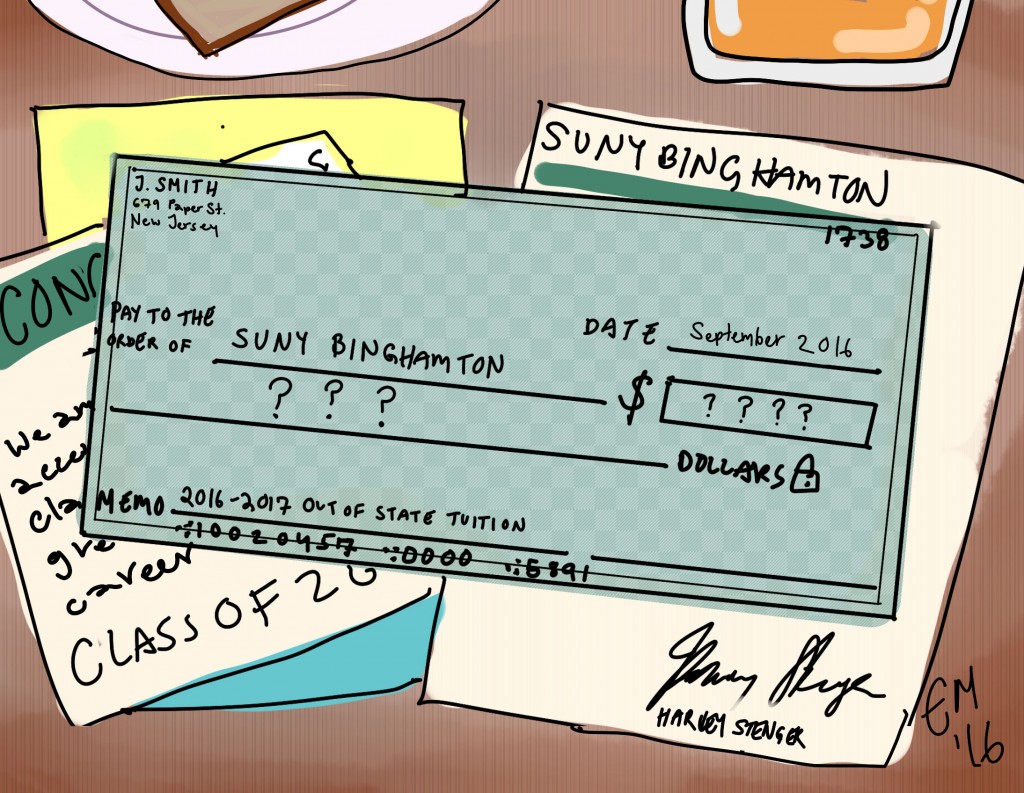Gov. Andrew Cuomo and the New York State legislature finalized the 2016-2017 New York state budget last week, and failed to renew SUNY 2020. The tuition plan, which kept yearly increases for all students in the system capped at $300 annually, had been in place for the past five years.
Prior to SUNY 2020’s implementation, tuition rates were unpredictable and students would see sporadic changes from year to year. The plan was up for renewal this year, and did not pass in the legislature. SUNY had also offered to freeze tuition increases for the coming year in exchange for a $78 million increase in funding from the state. Budget allocations granted an $18 million increase, leaving SUNY with a gap to fill. SUNY decided to freeze in-state tuition for the 2016-17 academic year, but could increase out-of-state tuition by up to 10 percent at all four university campuses — Albany, Binghamton, Buffalo and Stony Brook. This increase would allow for up to $22 million in increased revenue for SUNY.
The reality is that major SUNY campuses cannot compete with comparable flagship state universities on resources alone, and low out-of-state tuition plays a large role in popularity. Our current out-of-state tuition is $21,550, not including room and board and other fees. The University of Maryland, College Park currently charges $29,300 for out-of-state tuition and the University of Delaware $30,130 — both institutions that BU students frequently reference as close-calls when decision time rolled around at the end of high school. These schools boast name recognition far surpassing that of BU, but our currently unbeatable tuition helps draw in interested undergrads. With potential for tuition hikes, Binghamton University loses its comparative advantage.
While the SUNY system has a lot to offer, many applicants take their options at face value. The SUNY schools then find themselves stuck between a rock and a hard place: more revenue from tuition can lead to improved resources and increased prestige in the long-run, but it can also deter otherwise-interested potential students and hurt enrollment rates.
Many students were displeased with the $300 increases annually, and spoke out against the SUNY 2020 plan. But while tuition hikes are unpleasant for already loan-saddled students, the plan allowed for structure and security in the predictability of attendance costs. While the tuition freeze for in-state students may seem dreamy at first, the reality is that, come next year’s budget negotiations, the push must be for the return of the SUNY 2020 plan. Tuition freezes are a romantic notion, but are currently unsustainable as a long-term reality. And nobody wants to face unpredictable rates in the future.
Students — even soon-to-be graduates — need to start looking toward the future now to ensure a return of sustainability so that SUNY can continue its move toward an affordable-but-improved future for all students, system-wide. State legislature and SUNY central politics may seem distant, but the effects run close to home. If we want to follow BU’s path to a premier state university, tuition numbers must remain as competitive as admission rates.



